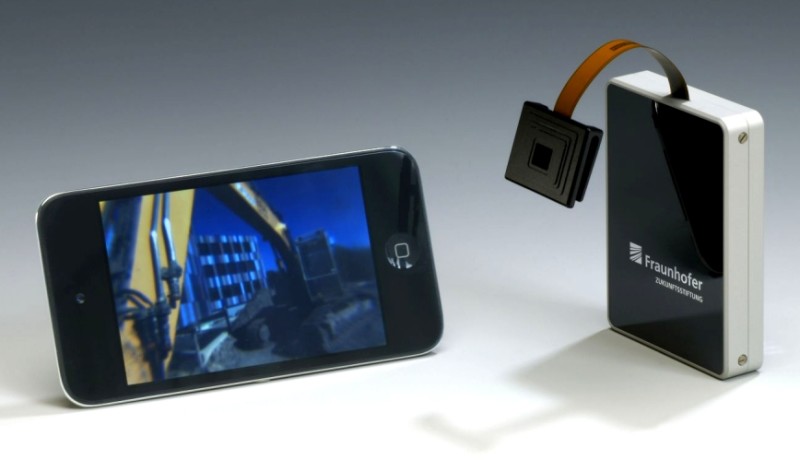Compound eye for smartphones and robots
January 31, 2017
on
on

Researchers at the Fraunhofer Institute for Applied Optics and Precision Engineering IOF have developed a process that allows cameras with a thickness of only 2 millimeters to be produced. Comparable to the eyes of insects, the lens of the camera is divided into 135 small segments, resulting in a resolution of 1 megapixel. It is therefore no surprise that the researchers gave their mini camera concept the name facetVISION.
The miniature lenses are placed close to each other; each lens 'sees', according to its position and with an apparture that resembles a shadow mask, only a small part of its surroundings. Ultimately this technology should achieve a resolution of 4 megapixels – higher than the resolution of the cameras that are currently used in industrial application (robots, for example).
This very small thickness makes the camera suitable for a large number of industrial, automotive and medical applications. But also for the design of smartphones the new camera can have far-reaching consequences: the lens of a modern handycamera has a thickness of 5 millimeters, in order to obtain a sufficiently sharp image. This new camera technology can therefore become very interesting for the development of ultra-thin smartphones.
The researchers, under the leadership of Andreas Brückner, have already demonstrated that facetVISION is suitable for mass production.
The miniature lenses are placed close to each other; each lens 'sees', according to its position and with an apparture that resembles a shadow mask, only a small part of its surroundings. Ultimately this technology should achieve a resolution of 4 megapixels – higher than the resolution of the cameras that are currently used in industrial application (robots, for example).
This very small thickness makes the camera suitable for a large number of industrial, automotive and medical applications. But also for the design of smartphones the new camera can have far-reaching consequences: the lens of a modern handycamera has a thickness of 5 millimeters, in order to obtain a sufficiently sharp image. This new camera technology can therefore become very interesting for the development of ultra-thin smartphones.
The researchers, under the leadership of Andreas Brückner, have already demonstrated that facetVISION is suitable for mass production.
Read full article
Hide full article


Discussion (0 comments)